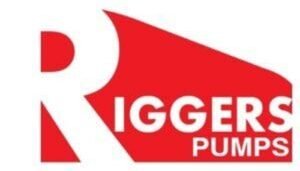A PLC control panel for high-pressure pump systems is a crucial component that ensures automated, precise, and reliable pump operation. These panels integrate multiple electrical and electronic components, enabling real-time monitoring, system protection, and efficient control. Below is an improved and comprehensive breakdown of key components that enhance functionality and performance. Here’s a breakdown of the main components:
1. Programmable Logic Controller (PLC)
- Core Control Unit: The PLC acts as the brain of the control panel, executing logic-based commands to regulate pump operations based on sensor inputs and user-defined parameters.
- Scalability & Connectivity: Supports expansion with multiple I/O modules, allowing integration with pressure sensors, flow meters, alarms, and motor starters.
- Fail-Safe Mechanisms: Modern PLCs feature self-diagnostics and redundancy options, ensuring continuous operation even during minor failures.
2. Power Supply Unit
- Stable Power Conversion: Converts AC supply to regulated DC voltage (typically 24V DC) to power PLCs, sensors, and control circuits.
- Uninterrupted Power: Incorporates surge protection and voltage regulation to prevent fluctuations that can affect performance.
3. Circuit Breakers & Surge Protection (SPD)
- Overcurrent Protection: Molded Case Circuit Breakers (MCCB) or Miniature Circuit Breakers (MCB) instantly disconnect power to prevent short circuits and overload damage.
- Surge Protection Device (SPD): Shields sensitive electronics like PLCs and Variable Frequency Drives (VFDs) from voltage spikes.
4. Motor Control Components
A. Contactors
Act as remotely controlled switches, allowing automated pump start/stop operations as directed by the PLC.
B. Overload Relays
Prevents motor overheating by disconnecting the motor circuit when it exceeds safe current limits. Adjustable settings ensure precise protection.
C. Variable Frequency Drive (VFD)
- Enhances energy efficiency by adjusting motor speed based on real-time demand, reducing power consumption.
- Enables smooth ramp-up/down to avoid pressure surges and mechanical stress.
5. Human-Machine Interface (HMI)
- User-Friendly Control: Touchscreen or LCD displays provide real-time monitoring of pressure, flow rates, and fault conditions.
- Remote Accessibility: Allows users to modify settings, troubleshoot issues, and view historical data logs.
6. Sensor Integration
- Pressure Sensors: Ensures precise pressure control by feeding real-time data to the PLC.
- Flow Meters: Maintains target flow rates, optimizing system performance.
- Temperature Sensors: Protects pump motors and fluids from overheating, triggering automated shutdowns if needed.
7. Input & Output (I/O) Modules
- Digital Inputs: Accept signals from pressure switches, limit switches, and emergency stop buttons.
- Analog Inputs: Process variable sensor signals, ensuring real-time feedback to the PLC.
- Output Modules: Control actuators, solenoid valves, alarms, and contactors to execute automated actions.
8. Alarm & Notification System
- Audible & Visual Alerts: Informs operators of faults such as low pressure, overheating, or system malfunctions.
- PLC-Integrated Safety Mechanisms: Triggers automatic shutdowns or operational adjustments to prevent damage.
9. Communication & Remote Monitoring
- Communication Protocols: Ethernet, Modbus, Profibus, and RS485 allow seamless integration with SCADA, BMS, or cloud-based monitori
- Remote Access: Enables off-site diagnostics, reducing downtime and maintenance costs.
10. Safety & Emergency Controls
- Emergency Stop Button: Provides immediate power disconnection, ensuring safety in hazardous situations.
- Fail-Safe Features: Includes redundancy circuits and auto-reset mechanisms for enhanced operational safety.
11. Thermal Management System
- Cooling Fans: Dissipate excess heat generated inside the panel.
- Anti-Condensation Heaters: Prevent moisture buildup in humid environments, protecting electrical components.
12. Control Relays & Wiring Management
- Auxiliary Relays: Facilitate switching between control modes, activating alarms, or running auxiliary systems.
- High-Quality Wiring & Terminal Blocks: Ensure organized, safe, and reliable electrical connections.
Optional Components:
- Battery Backup (UPS): Provides power to the PLC and HMI during outages, allowing safe shutdown or operation continuity.
- Data Logger: Records operational data (e.g., pressure, flow, temperature) for performance analysis and maintenance scheduling.
- Redundant PLC Systems: Used in critical applications to eliminate downtime due to primary PLC failure.
A high-pressure pump PLC control panel is essential for precision control, safety, and efficiency in industrial, municipal, and commercial applications. By integrating advanced monitoring, automation, and protection systems, these panels ensure optimal pump performance while reducing operational costs and maintenance downtime. Investing in a well-designed PLC panel guarantees long-term reliability and efficiency for high-pressure pump systems.
For customized PLC panel solutions or expert consultation, contact our team today!

